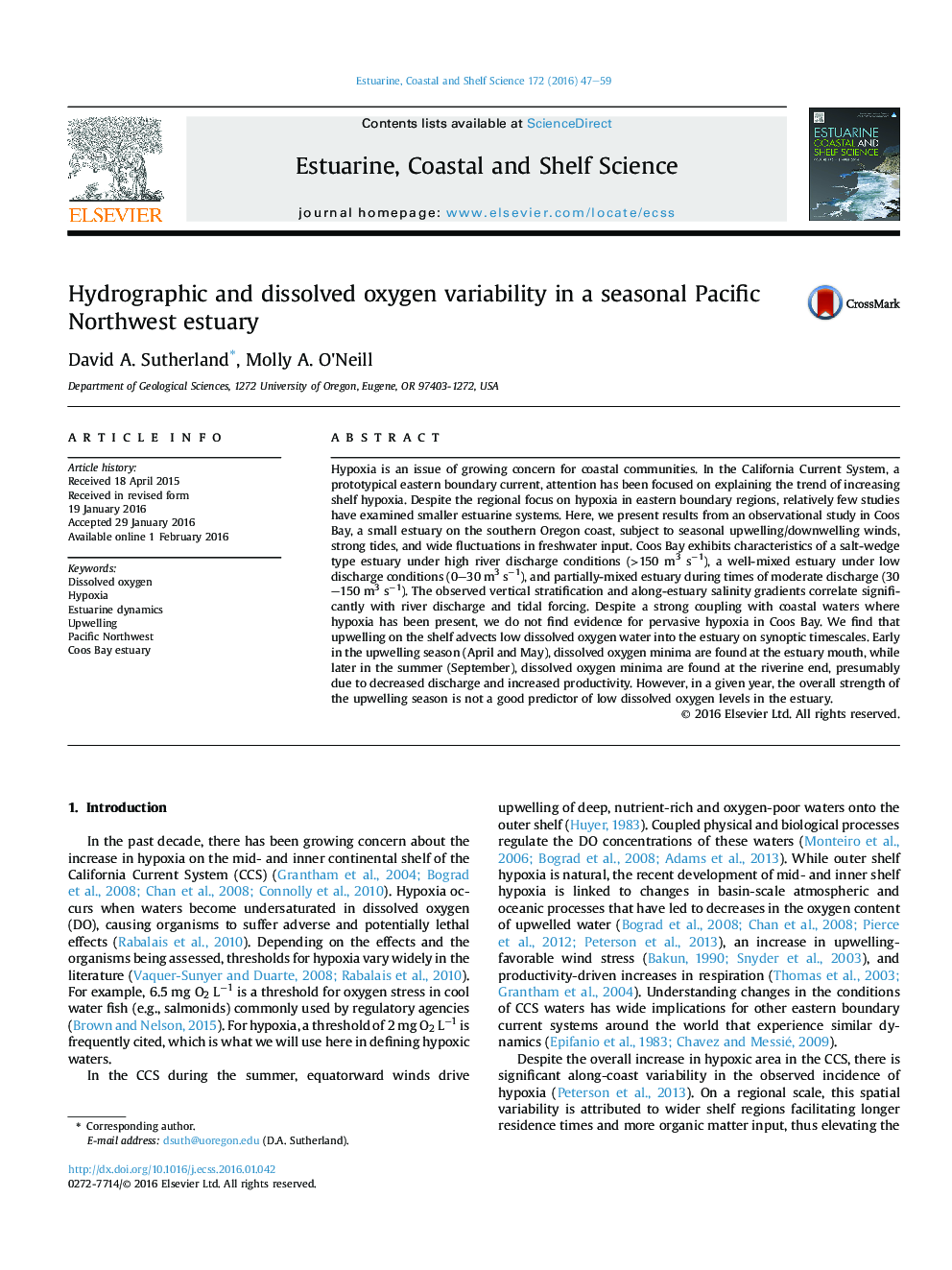| Article ID | Journal | Published Year | Pages | File Type |
|---|---|---|---|---|
| 4539308 | Estuarine, Coastal and Shelf Science | 2016 | 13 Pages |
Hypoxia is an issue of growing concern for coastal communities. In the California Current System, a prototypical eastern boundary current, attention has been focused on explaining the trend of increasing shelf hypoxia. Despite the regional focus on hypoxia in eastern boundary regions, relatively few studies have examined smaller estuarine systems. Here, we present results from an observational study in Coos Bay, a small estuary on the southern Oregon coast, subject to seasonal upwelling/downwelling winds, strong tides, and wide fluctuations in freshwater input. Coos Bay exhibits characteristics of a salt-wedge type estuary under high river discharge conditions (>150 m3 s−1), a well-mixed estuary under low discharge conditions (0–30 m3 s−1), and partially-mixed estuary during times of moderate discharge (30–150 m3 s−1). The observed vertical stratification and along-estuary salinity gradients correlate significantly with river discharge and tidal forcing. Despite a strong coupling with coastal waters where hypoxia has been present, we do not find evidence for pervasive hypoxia in Coos Bay. We find that upwelling on the shelf advects low dissolved oxygen water into the estuary on synoptic timescales. Early in the upwelling season (April and May), dissolved oxygen minima are found at the estuary mouth, while later in the summer (September), dissolved oxygen minima are found at the riverine end, presumably due to decreased discharge and increased productivity. However, in a given year, the overall strength of the upwelling season is not a good predictor of low dissolved oxygen levels in the estuary.
